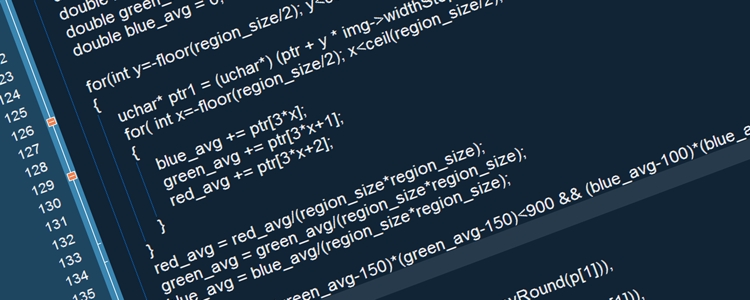1. Change channel number
Wireless routers operate on a fixed channel. Since most routers ship with a pre-selected channel, the wireless signal may interfere with other routers in the vicinity that are operating on the same channel.
Changing the wireless channel from the factory default is a good starting point if your wireless signal strength is poor.
2. Give the router space to breathe
The biggest advantage of a wireless router is that it can penetrate doors and walls – but that doesn't mean you can just stuff it next to a wall or cordless telephone, or use it as a stand for your stack of DVDs. Treat it with respect.
Try to keep it in a central location, away from other wireless devices; make sure it's not in direct sunlight; lift it off the carpet; and ensure its vents and air holes aren't covered.
3. Improve reception
Try as you might, you'll find it's sometimes not possible to put the router in a good spot. One way around the problem is to buy a router with multiple antennas and point them in a variety of directions covering your home.
Alternatively, if you've already got a router, check whether it's possible to upgrade its antennas to something stronger. However, don't get disheartened if your router doesn't have any antennas. A wireless repeater compatible with your router is a perfect solution.
4. Use WEP
Running an unsecured network will earn you brownie points from neighbours and hackers with cars, but that's about it. Wireless routers support a variety of encryption methods, such as WPA and WEP, but these aren't enabled by default.
WPA2 is the most secure method at the moment, but before deciding on an encryption method, make sure your network cards and adapters support it as well. Bear in mind that older machines – and games consoles such as the Nintendo DS – don't support WPA.
5. Restrict access to specific PCs
If you really don't want to use encryption, you can force your router to only connect to specific PCs. Your router identifies each computer by the unique MAC address of its network gear. Feed it a list of MAC addresses to connect to and you save yourself the trouble of entering a password each time you log in.
The disadvantage is that you'll have to add the MAC address of any new computer before it can get on your network – which is probably a more annoying way of getting things done.
6. Disable SSID broadcast
All wireless routers have a Service Set Identifier (SSID) that identifies them to network computers. Routers from the same manufacturer generally ship with the same SSID; 'Netgear' or 'Cisco', for example.
You should first change the SSID to something unique to set your router apart from those of your neighbours. Then, once all your hardware has been set up, it's better to turn off broadcasting the SSID altogether. This ensures your router isn't displayed in the list of available networks, and won't be a target for potential hackers.
7. Keep the firmware updated
Router manufacturers keep working on firmware, even after hardware has been shipped. In addition to tweaks in the user interface, new versions might make better use of the various components in the router, or add extra features.
Just like with an operating system, it's a good idea to upgrade the firmware of the router regularly – check the manufacturer's website for a new version. In the good old days, there was the risk of a botched firmware upgrade bricking your router, but it's a lot safer today.
8. Familiarise yourself with the router manager
All routers ship with a browser based manager. To use many of the tips in this article, you'll have to log in to this interface – try typing 192.168.1.1 into your web browser for the most common location.
It's a good idea to familiarise yourself with the various options and settings you can tweak from within this software. Many routers also have detailed documentation that's updated regularly, so hunt out the latest manual online.
9. Check your connections
There's nothing more irritating than receiving a 'cannot connect to remote machine' error. To ensure a solid connection, use Ethernet cables where possible. It's also a good idea to check the connection between the two PCs with the ping command.
To do this, simply open a command line and type, for instance, ping 192.168.1.2. You'll need to replace the address given here with that of your target machine. Ping works identically on Windows, Mac and Linux.
10. Forward ports
Many servers and applications – for example, file-sharing software, FTP servers and music-streaming servers – need to serve people outside the network. These applications accept connections on specific ports.
With port forwarding – check your router's interface – you can poke holes in your router and ask it to direct incoming traffic on a particular port (or, if you wish, a range of ports) to a specific computer that's on the network.
11. Change DNS providers
DNS is what fetches you a website by translating the human-friendly address, such as www.pcplus.co.uk, into a bunch of machine-friendly numbers. It also displays the '404 page not found' error, corrects misspelt URLs and finds the fastest route to a web server that hosts the site you want to visit, along with lots of other cool things.
Generally, it's up to the ISP to put up a DNS server. However, there are other free services as well, including the likes of OpenDNS and Google Public DNS.
12. Use USB adapters
These days, it's difficult to find a laptop or netbook without a built-in wireless module, but if you've used one, you'll know that they can't always be relied upon. Network cards with antennas are the best option, but they're really only suitable for desktops.
If you really need both mobility and assurance, make sure you get a USB adapter. Most of them ship with a Windows driver, but many work out-of-the-box on Linux as well.
13. Enable Dynamic DNS
The Dynamic DNS feature enables you to connect to your computer remotely. Back in the day, when real-estate on the web was expensive, it was a wonderful option to show off your HTML skills and host your own website.
Now, by associating your dynamic IP address with a domain name, DDNS enables you to connect to the internet-exposed home computer from anywhere in the world. In addition to enabling the feature on your router, you'll also have to register with a dynamic DNS provider, such asDynDNS.org.
14. Save power with Wake-on-LAN
What's the point of keeping a print server on when there's nothing to print? The smart way to save energy is to use the Wake-on- LAN feature of the network card. Thanks to this, you can put the machine to sleep after it's been configured to wake upon detecting network activity.
15. Encrypt your online activity
With the range of snooping tools now available, it isn't safe to do anything online without covering your footprints. There are lots of tools that promise to encrypt your online activity, making it completely unintelligible to anyone who might be listening in.
Some of the best ones to try are the Enigmail plug-in for Thunderbird,Psi for Google Talk and FireGPG, available for Gmail.
16. Get a Firewall distro
You can configure a firewall on a Windows or Linux machine, and there are also a bunch of third-party software firewalls available. However, building a firewall isn't easy. If you're serious about putting one up, download a dedicated firewall distro, such as Ebox.
17. Install the software
Ebox is distributed as a Live CD ISO and there are VirtualBox/VMWare images as well. It's based on Ubuntu Server 8.04. You can also pull in Ebox packages to a standard Ubuntu Server 10.04 installation. You can find it atwww.ebox-platform.com.
18. Configure settings
Ebox can be adapted flexibly to your network. You can use it to restrict services that can be accessed and slice the network to keep some areas more secure than others. The distro runs a browser-based interface for adding, removing and configuring the components.
19. Filter content
Besides the firewall, intrusion detection (via Snort) and filtering content (via DansGuardian) are two other highlights of the distro. DansGuardian can also plug into the ClamAV antivirus scanner and filter content based on known virus signatures.
20. Exploit other features
In case you're still not satisfied, Ebox can also act as a gateway and provide a host of other services. It bundles various applications that enable you to turn your network into a VPN, host XMPP chat sessions or run a Postfix mail server, a Squid web proxy and more.
21. Turn on UPnP
Universal Plug and Play helps smart devices that support UPnP to discover each other without any user intervention. Once turned on from within your router, UPnP enables a compatible infrared device, a Bluetooth phone or a FireWire camera to see and talk to each other.
22. Write files remotely
The most logical use of a network is to share files. This is the job of the SMB protocol. Thanks to it, you'll be able to write files to a remote network share via Network Neighbourhood. On Linux, the SMB protocol is implemented by Samba.
23. Share printers remotely
In addition to sharing files, SMB can be used to share printers attached to a Windows machine. Once configured via the Windows Control Panel, a printer can be used to accept print orders or even be managed from a remote machine, irrespective of its operating system.
24. Format shareable partitions as FAT
PCs running Windows can easily see each other and share files. For Linux or Mac machines, ensure the partitions are formatted with the FAT filesystem. Create them as Samba shares and they'll show up under Network Neighbourhood.
25. Plug in USB drives
Once, if you wanted to share files on the network, a network-attached-storage, or NAS, device was the best bet. Not any more. New routers enable you to plug in one or more USB devices that are automatically accessible by all the users connected to the router.
Read More »















